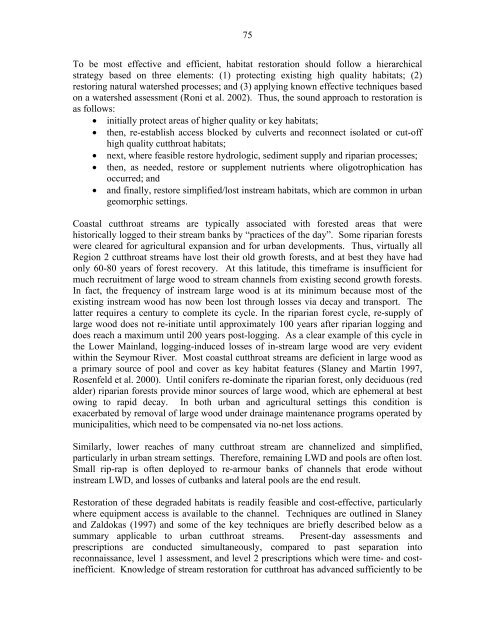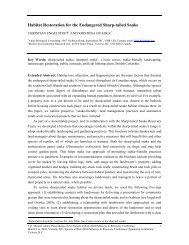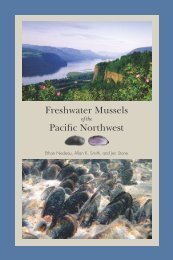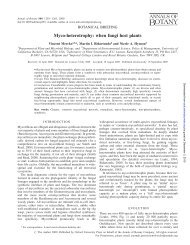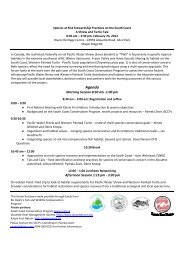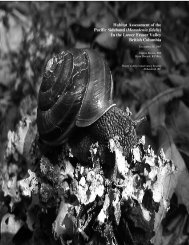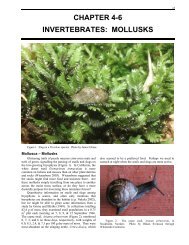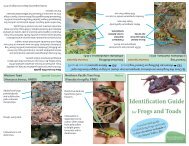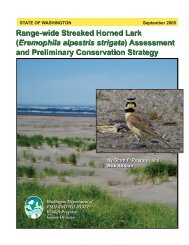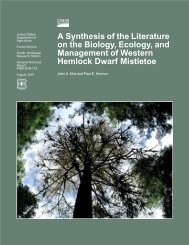Coastal Cutthroat Trout as Sentinels of Lower Mainland Watershed ...
Coastal Cutthroat Trout as Sentinels of Lower Mainland Watershed ...
Coastal Cutthroat Trout as Sentinels of Lower Mainland Watershed ...
Create successful ePaper yourself
Turn your PDF publications into a flip-book with our unique Google optimized e-Paper software.
75To be most effective and efficient, habitat restoration should follow a hierarchicalstrategy b<strong>as</strong>ed on three elements: (1) protecting existing high quality habitats; (2)restoring natural watershed processes; and (3) applying known effective techniques b<strong>as</strong>edon a watershed <strong>as</strong>sessment (Roni et al. 2002). Thus, the sound approach to restoration is<strong>as</strong> follows:• initially protect are<strong>as</strong> <strong>of</strong> higher quality or key habitats;• then, re-establish access blocked by culverts and reconnect isolated or cut-<strong>of</strong>fhigh quality cutthroat habitats;• next, where fe<strong>as</strong>ible restore hydrologic, sediment supply and riparian processes;• then, <strong>as</strong> needed, restore or supplement nutrients where oligotrophication h<strong>as</strong>occurred; and• and finally, restore simplified/lost instream habitats, which are common in urbangeomorphic settings.<strong>Co<strong>as</strong>tal</strong> cutthroat streams are typically <strong>as</strong>sociated with forested are<strong>as</strong> that werehistorically logged to their stream banks by “practices <strong>of</strong> the day”. Some riparian forestswere cleared for agricultural expansion and for urban developments. Thus, virtually allRegion 2 cutthroat streams have lost their old growth forests, and at best they have hadonly 60-80 years <strong>of</strong> forest recovery. At this latitude, this timeframe is insufficient formuch recruitment <strong>of</strong> large wood to stream channels from existing second growth forests.In fact, the frequency <strong>of</strong> instream large wood is at its minimum because most <strong>of</strong> theexisting instream wood h<strong>as</strong> now been lost through losses via decay and transport. Thelatter requires a century to complete its cycle. In the riparian forest cycle, re-supply <strong>of</strong>large wood does not re-initiate until approximately 100 years after riparian logging anddoes reach a maximum until 200 years post-logging. As a clear example <strong>of</strong> this cycle inthe <strong>Lower</strong> <strong>Mainland</strong>, logging-induced losses <strong>of</strong> in-stream large wood are very evidentwithin the Seymour River. Most co<strong>as</strong>tal cutthroat streams are deficient in large wood <strong>as</strong>a primary source <strong>of</strong> pool and cover <strong>as</strong> key habitat features (Slaney and Martin 1997,Rosenfeld et al. 2000). Until conifers re-dominate the riparian forest, only deciduous (redalder) riparian forests provide minor sources <strong>of</strong> large wood, which are ephemeral at bestowing to rapid decay. In both urban and agricultural settings this condition isexacerbated by removal <strong>of</strong> large wood under drainage maintenance programs operated bymunicipalities, which need to be compensated via no-net loss actions.Similarly, lower reaches <strong>of</strong> many cutthroat stream are channelized and simplified,particularly in urban stream settings. Therefore, remaining LWD and pools are <strong>of</strong>ten lost.Small rip-rap is <strong>of</strong>ten deployed to re-armour banks <strong>of</strong> channels that erode withoutinstream LWD, and losses <strong>of</strong> cutbanks and lateral pools are the end result.Restoration <strong>of</strong> these degraded habitats is readily fe<strong>as</strong>ible and cost-effective, particularlywhere equipment access is available to the channel. Techniques are outlined in Slaneyand Zaldok<strong>as</strong> (1997) and some <strong>of</strong> the key techniques are briefly described below <strong>as</strong> <strong>as</strong>ummary applicable to urban cutthroat streams. Present-day <strong>as</strong>sessments andprescriptions are conducted simultaneously, compared to p<strong>as</strong>t separation intoreconnaissance, level 1 <strong>as</strong>sessment, and level 2 prescriptions which were time- and costinefficient.Knowledge <strong>of</strong> stream restoration for cutthroat h<strong>as</strong> advanced sufficiently to be


